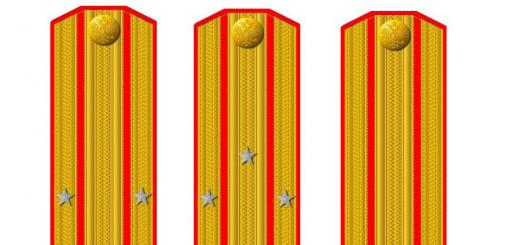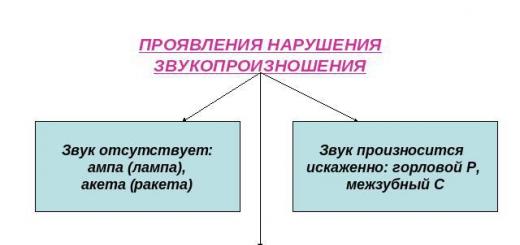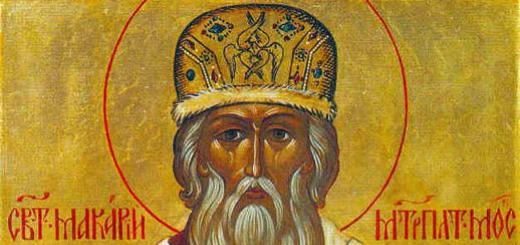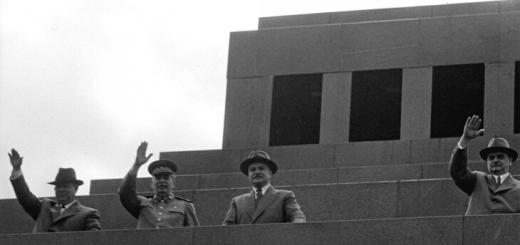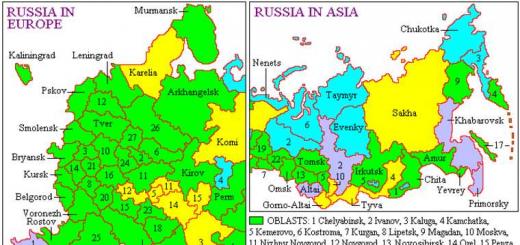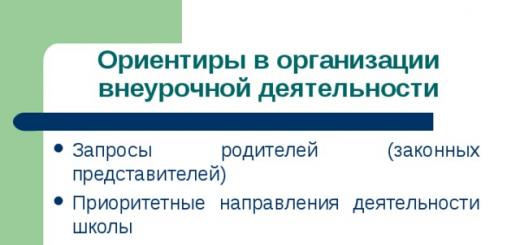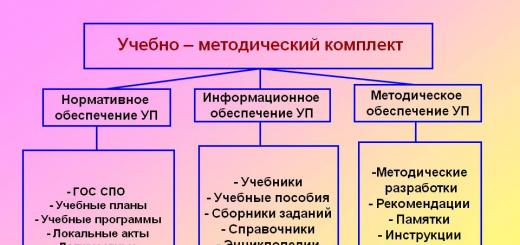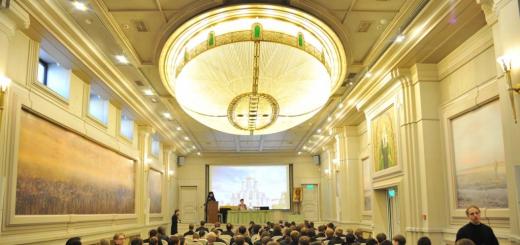On September 20, 1871, a young Russian scientist landed on the green shores of a tropical paradise. His dream has finally come true. After a long 10-month journey on the corvette Vityaz, 25-year-old Nikolai Miklouho-Maclay landed in Astrolabe Bay, on the shore of the island of New Guinea, which became the shore of his destiny, where he aspired for the rest of his life.
Thus began this wonderful story and a new era in the life of a young explorer, traveler and great humanist, after whom, a century and a half later, children in Papuan families on the Maclay Coast, on the northeastern coast of the island of New Guinea, are named.
Nikolai Miklouho-Maclay – “White Papuan”
Nikolai Nikolaevich Miklukha, later Miklouho-Maclay, was born on June 17, 1846 in the village of Yazykovo-Rozhdestvenskoye near Borovichi, Novgorod province. He was the second of five children in the family of a young railway engineer Nikolai Ilyich Miklukha, who in those years worked on the construction of the railway in this province. Nikolai Ilyich became the first head of the Nikolaevsky, today Moskovsky station in St. Petersburg, but he lived a short life, dying at the age of 39 from tuberculosis. He was a true patriot of his work, personally participating in the construction of the railway, where he often lived in extremely cramped conditions and undermined his health. The children, the eldest of whom was 12 at that time, and the youngest 1.5 years old, remained with their mother, Ekaterina Semyonovna, nee Becker, who came from a family of Russified Germans who came to Russia under Catherine II. Catherine Semyonovna’s grandfather was the life physician of the Polish king Stanislav Poniatowski, for whose service he came from Prussia on behalf of the Prussian king, and her father married a Polish woman, Louise Shatkovskaya, originally from the city of Vilna.
Nikolai Nikolaevich became the most famous of the Miklouho-Maklayev family, and today Novgorodians and all Russians are proud of their famous compatriot. However, Nikolai Nikolaevich’s life was filled with difficulties from an early age. It was very difficult for the mother to support such a large family, but she managed to raise all the children in the spirit of the original Russian nobility, with high morals and principles. All children received a good education. Nikolai Nikolaevich began his education at St. Petersburg University, but in 1864, for participating in the student movement, he was expelled. Nikolai Nikolaevich continued his studies abroad, at the Faculty of Philosophy of Heidelberg University, and at the medical faculties of Leipzig and Jena Universities, studying anatomy and zoology. It was scientific work in these areas that brought Nikolai Nikolaevich his first fame in scientific circles.
In 1866, N. N. Miklouho-Maclay went to the Canary Islands, where, together with his zoology teacher, famous biologist, professor at the University of Jena Ernst Haeckel, he studied the fauna of the island of Lanzarote. After trips to Sicily and the coastal areas of the Red Sea, in the fall of 1869, Nikolai Nikolaevich presented his plan for a scientific trip to the Pacific Ocean to the Russian Geographical Society and received support and approval. As a result, the corvette Vityaz, which was then circumnavigating the world, took a young scientist on board, and on September 20, 1871, he landed on the island of New Guinea, in Astrolabe Bay, and the Vityaz crew built a small hut on the shore of the bay for Nikolai Nikolaevich and his two companions. Thus began the amazing epic of the life and scientific research of the famous scientist. During his first trip, Miklouho-Maclay lived among the Papuans for 15 months, gaining boundless trust and respect, as a man of his word, who became for the local population their “white Papuan.”
Miklouho-Maclay was the first among Europeans to assert the equality of all races and advocate the right of the Papuans to independence. In 1882, Nikolai Nikolaevich, while staying in St. Petersburg, even turned to Emperor Alexander III with a proposal to protect the population of the Malayan coast of New Guinea and establish a “free Russian colony” there. However, this offer was not accepted, and he returned to Sydney, where he spent two years organizing his extensive collections and diaries.
 There he married Margaret Robertson (01/21/1855-01/01/1936), the daughter of a large landowner, general governor of the state of New South Wales in Australia, with whom he later lived in St. Petersburg for almost two years, bringing with him two sons to his homeland - Alexandra (11/14/1884 - November 1951) and Vladimir (12/29/1885 - 02/19/1958).
There he married Margaret Robertson (01/21/1855-01/01/1936), the daughter of a large landowner, general governor of the state of New South Wales in Australia, with whom he later lived in St. Petersburg for almost two years, bringing with him two sons to his homeland - Alexandra (11/14/1884 - November 1951) and Vladimir (12/29/1885 - 02/19/1958).
The collected materials and collections allowed Nikolai Nikolaevich to organize an exhibition in St. Petersburg in 1886, which became a sensation in scientific circles. Miklouho-Maclay's articles were published in many publications and, above all, in the Izvestia of the Imperial Russian Geographical Society.
On April 14, 1888, at the 42nd year of his life, Nikolai Nikolaevich died in St. Petersburg and was buried at the Volkovsky cemetery. In 1938, his ashes were reburied next to the grave of his father on the Literary Bridges. After the death of Nikolai Nikolaevich, his widow and children returned to Sydney. Until 1917, for special services to the fatherland, she received a pension from the Russian government to support her children. She donated her husband's works and collections to the Russian Geographical Society. More than 700 drawings are kept in the archives of the Russian Geographical Society, a collection of objects collected during expeditions, and some diaries are now kept in St. Petersburg, in the Museum of Anthropology and Ethnography. Peter the Great (Kunstkamera)¹.
The rare Russian surname Miklouho-Maclay is known today throughout the world. But it was Nikolai Nikolaevich who restored it, after which the whole family officially accepted it.
According to one of the family legends, in 1648, during the Battle of Zheltye Vody, in Ukraine, the Cossacks of Bohdan Khmelnytsky, who defeated the troops of the Polish hetman Pototsky, captured the Scottish baron Michael MacLay, who served in the Polish army. The baron remained in Ukraine, became Russified and married the daughter of the Cossack who had captured him, named Miklukha, taking the surname of his wife. Until the 60s of the 19th century, the second part of the surname was used very rarely, and Nikolai Nikolaevich officially restored it before his first trip to the island of New Guinea.
It was after Margaret took her sons to Sydney that the Miklouho-Maclay family had an Australian branch. The descendants of Nikolai Nikolaevich live in Australia - in the cities of Sydney, Melbourne, Canber, and still maintain contact with his family in Russia.
The Russian branch of surname bearers in the male line comes from the older brother Sergei Nikolaevich. Unfortunately, there are not many bearers of the surname left - some died during the war in besieged Leningrad, some went to Yugoslavia during the revolution, some disappeared in the troubled 20s of the twentieth century.
Miklouho-Maclay and the Maclay Coast
The descendants of Sergei Nikolaevich, the elder brother of the great humanist and traveler, live in St. Petersburg. His great-grandson Nikolai Andreevich was born in 1940, graduated from the Faculty of Geography of Leningrad University, and worked for 35 years at the Central Research Geological Prospecting Institute. He is now retired. His son, successor to the family name, great-great-grandson Nikolai Nikolaevich Miklouho-Maclay, was born in 1973. He is the first full namesake of the great scientist, an economist by training, keen on the legacy of the great traveler Nikolai Nikolaevich, the first of the Miklouho-Maclayevs to repeat the trip to the island of New Guinea in 2017, organizing an expedition with the participation of scientists from the St. Petersburg Museum of Ethnography and Anthropology (Kunstkamera ) RAS and the Institute of Ethnology and Anthropology named after. N.N. Miklouho-Maclay RAS.
 Modern Nikolai Nikolaevich Miklouho-Maclay is the founder of the Foundation for the Preservation of Ethnocultural Heritage named after. Miklouho-Maclay.
Modern Nikolai Nikolaevich Miklouho-Maclay is the founder of the Foundation for the Preservation of Ethnocultural Heritage named after. Miklouho-Maclay.
As a result of the expedition, it was possible to bring to Russia a rich collection of objects of material culture of the peoples living on the Maclay Coast; unique photo and video material was collected that will serve humanity and become the basis for organizing exhibitions, creating documentaries, scientific articles and works.
The modern collection will complement the one that was collected back in the 19th century by Miklouho-Maclay the Great, and is stored in the St. Petersburg Kunstkamera. Now we can truly say that the idea of preserving the legacy of the great scientist has come to life, revealing a unique world that is still little studied, and the interest of the world community in it still does not fade.
The expedition of a descendant of Miklouho-Maclay with the participation of scientists confirmed the relevance of the works of Nikolai Nikolaevich and the collections he collected. We are rediscovering a world unknown to us 150 years ago, establishing connections not only with the local population, but also with the scientific community - with the largest Universities and Museums of Papua New Guinea.
 It is symbolic that Papua New Guinea opened its doors to the full namesake and descendant of Miklouho-Maclay from Russia, with the desire to restore lost ties. Miklouho-Maclay of the 21st century was received by the “Father of the Nation” Sir Michael Somare, major public figures of this country, one of whom was Sir Peter Barter, the leadership of Universities and National Museums.
It is symbolic that Papua New Guinea opened its doors to the full namesake and descendant of Miklouho-Maclay from Russia, with the desire to restore lost ties. Miklouho-Maclay of the 21st century was received by the “Father of the Nation” Sir Michael Somare, major public figures of this country, one of whom was Sir Peter Barter, the leadership of Universities and National Museums.
Oceania, the island of New Guinea, once so distant and unknown, is becoming closer, thanks to Miklouho-Maclay the Younger and the memory of Miklouho-Maclay the Elder, who is still rightfully considered the discoverer of the island. After all, it was he who discovered to humanity an island inhabited by people equal to Europeans, although previously it was generally accepted that a separate transitional species between monkey and man lived on the island. Miklouho-Maclay proved the inconsistency of these ideas and fought for a long time for the rights of the peoples inhabiting the second largest island in the world.
At one time, the Maclay Coast, a section of the northeastern coast of the island of New Guinea, about 300 km long, was named after the great scientist. But over time, the historical name was lost, and today it is called the Rai coast, named after a French explorer who studied the languages of New Guinea.
During the first Russian expedition in modern history in 2017, Miklouho-Maclay Jr., or the fourth, as he was called on the island, discovered documents in the Mitchel Library in Australia confirming the historical name of the coast - Maclay Coast, used in documents of that time. And today there is a real opportunity to restore this name on the maps of Papua New Guinea, especially since public figures and local residents of this country were glad to learn about such an initiative.
More than a century has passed since the death of H. N. Miklouho-Maclay - a classic of world science, a brave traveler, a humanist thinker, a passionate fighter for the rights of oppressed peoples. But his scientific and social feats, his rich heritage have not lost their significance to this day.
¹ Based on materials from the archives of the Miklouho-Maclayev family and the article “The Russian family is a placer of diamonds. Let's meet Miklouho-Maclay." V.E. Pavlov, magazine “History of St. Petersburg” No. 3 (13) from 2003.
Date of birth: July 17, 1846.
Date of death: April 14, 1888.
Place of birth: s. Christmas of the Russian Empire
Nikolai Nikolaevich Miklukha, better known by his last name Miklukho Maclay– Russian researcher who worked at the intersection of anthropology, ethnography and biology.
Nikolai saw the light in a small village in the Novgorod province. His father was an engineer, his mother, Ekaterina Semyonovna, was the daughter of Colonel Becker, who distinguished himself in the War of 1812. In the village of Rozhdestvenskoye, Nikolai’s father, Nikolai Ilyich, began his engineering career. In 1855, he and his family were transferred to St. Petersburg. The family did not live well, but there was always money for the children’s education. Thus, Nikolai mastered German and French as a child and began to draw well.
Three years later, Nikolai and his brother Sergei continued their studies at the state gymnasium. Their father had by that time died of tuberculosis and private school education had become unavailable.
Nikolai studied poorly and had difficulty moving to 5th grade. No special talents were discovered during training.
Soon, high school students found themselves behind bars for participating in a student demonstration related to the abolition of serfdom. The imprisonment did not last long, but remained in the memory of the young people.
Studying continued to be difficult for Nikolai. Missing classes, poor grades, suffering from a serious illness with absences from classes - the result was repeated training in the 6th grade.
In 1863, Nikolai left the gymnasium and began attending classes at the university. Here, a 17-year-old boy discovers that he is good at natural sciences and enjoys studying. And again, participation in a student meeting becomes a reason for expulsion from the university.
Nikolai continues his studies in Germany, since foreigners there were not required to present a certificate.
In Heidelberg, the student also did not stay away from politics, but continued to study both exact and natural sciences. This was followed by Jena, where Nikolai became particularly impressed by the ideas of Darwinism. In Jena, Nikolai studied medicine and was Haeckel's assistant, which gave him enormous practical experience.
This experience was very useful when traveling with an expedition to the Canary Islands. Cholera, which was raging in Europe at that time, almost derailed the trip and the plans of the scientists. Fortunately, a training ship was able to take them to Tenerife.
Finally, research activities began - and immediately Miklukha discovered several completely new species of microscopic aquatic inhabitants. Local residents did not understand the interest of scientists and considered them involved in magic. The expedition ended its work and the scientists returned to Jena in 1867.
Of course, the trip enriched Nikolai with experience and upon arrival he began to write articles and made an educational trip to the countries of Northern Europe. A year later, graduation from university follows and continuation of scientific work. Lack of money did not allow Nikolai to go on expeditions, but soon luck smiled on him, and he ended up in the house of the German biologist Dorn, who helped the young scientist with a laboratory for studying marine life.
Having saved up money, in 1869 Nikolai set off to study the fauna of the Red Sea, which had been practically undescribed until that time.
The work was difficult - heat, attacks of malaria, inflammation of the eyes from dust storms. This did not stop the scientist from collecting a collection of sponges and delivering it to Russia.
In Russia, the scientist managed to convince the scientific community of the need to study lands in equatorial latitudes. The Russian fleet did not plan its stay in the South Seas. The scientist managed to find and interest patrons of the arts. The ship "Vityaz" specially changed its route so that the scientist could begin his activities. The journey began to New Guinea, where he spent 2 years. During this time, he got to know the natives, studying their life and rituals.
Then came Hong Kong, Indonesia and again New Guinea.
A trip to Sydney and Melanesia soon followed, where the scientist’s fame and ideas gained international proportions.
From Sydney, with an opportunity that turned up, Nikolai returned to his homeland, St. Petersburg. There he held many conferences and lectures. The scientist's health was undermined and worsened day by day, so he decided to go to Europe for treatment. He learned there that his beloved, Margaret, was ready to become his wife. Since she was in Australia, the scientist immediately found a way to go there. Their marriage took place in 1884. The couple had two children.
Due to hostilities involving Britain and Germany that flared up in the New Guinea region, it was decided to return to Russia. In Russia, health deteriorated catastrophically. Minor pain in the jaw soon required pain relief with narcotic analgesics. Soon an infection set in, and even the eminent doctors of that time were powerless.
Achievements of Nikolai Miklouho-Maclay:
Wrote a lot of scientific papers on biology and anthropology
He described the life and customs of many peoples of Southeast Asia. He refuted the opinion that some peoples are a transitional link from apes to Homo Sapiens.
Described several new species of marine fauna
Facts from the biography of Nikolai Miklouho-Maclay:
1846, July 17 born in Rozhdestvenskoye
1855 moved to St. Petersburg
1863 decided to stop studying at the gymnasium
1865 began studies in Jena
1869 expedition to the Red Sea
1871 began reveling on the “Maclay Coast”
1878 stay in Australia
1884 marriage to Margaret Robertson
1888 April 14 died after a serious illness
Interesting facts of Nikolai Miklouho-Maclay:
Residents of New Guinea believed that Nicholas arrived in their settlement from the Moon.
During his travels he suffered many tropical diseases; malaria accompanied the scientist all his life.
Wrote a scientific paper based on my experience of smoking opium.
The eastern coast of Guinea is named after the scientist.
He considered himself the owner of an “ethnographic reserve” and dreamed of becoming the ruler of the Papuan Union.
Nikolai Nikolaevich Miklouho - Maclay was born on July 17, 1846. He was born in the village of Yazykovo-Rozhdestvensky, Novgorod province. The future famous ethnographer and traveler was born into a noble family. The biography of Nikolai Miklukha is rich in many different events and interesting facts.
Nikolai's father, Nikolai Ilyich Miklukha, was a railway engineer. Mother Ekaterina Semyonovna came from the noble family of Beckers, who distinguished themselves during the Patriotic War of 1812. Because of his father's work, the family was forced to constantly move. In 1855, the entire family arrived for permanent residence in St. Petersburg. Miklouho-Maclay’s family was of average income, but there was only enough money for education and raising children.
After his father's death, Nikolai's mother made a living by drawing geographical maps. This gave her the opportunity to invite teachers to her home for her two sons Nikolai and Sergei. Since childhood, Nikolai mastered the German and French languages. His mother hired an art teacher for him, who was able to discover artistic abilities in the boy.
For the first three years after moving to St. Petersburg, Nikolai attended a private school, but after the death of his father, paid education became unavailable for the family. The brothers were transferred to a state gymnasium. Studying was difficult for the boy. Nikolai often skipped classes. Soon he took part in a student demonstration and ended up in prison.
Studying at the University
Nikolai quit studying at the gymnasium after entering the 6th grade and began listening to lectures at the university. His attention was attracted by scientific activities, so he became a volunteer student at the Faculty of Physical and Mathematical Sciences of St. Petersburg University. In addition to the basic courses, Nikolai seriously studied physiology. However, he failed to obtain a higher education diploma in Russia. Due to a small incident, the young man was forbidden to attend lectures.
The desire to study natural sciences was so strong that the mother, giving in to her son’s persuasion, sent him to study in Germany. While living abroad, Nikolai changes to three different universities. He first entered the University of Heidelberg, then transferred to the medical faculty of the University of Leipzig. The last place of study is the University of Jena, where Nikolai studies animal anatomy. Having received his diploma, the young man returns to Russia.
Scientific activity of Nikolai Nikolaevich Miklouho - Maclay
The University of Jena gave Nikolai the opportunity to participate in a scientific expedition for the first time. He was Haeckel’s favorite student and assistant, so at the professor’s request he went with him to Sicily to study the flora and fauna of the Mediterranean. Practical experience was useful to Nikolai during his trip to the island of Tenerife.
The real scientific activity of Nikolai Nikolaevich began after his trip to Morocco. He discovered several types of microorganisms. However, the local population did not understand the scientists’ interest, and the expedition had to be curtailed. The scientist returned to Jena only in 1867. This summer, Nikolai published his first scientific article in the Jena Journal of Medicine and Natural History.
The scientist undertook two large and long trips to New Guinea, where he studied the life and activities of local tribes. Initially, the local population was wary of the researcher, but then he was accepted as a good friend. Nicholas lived in New Guinea from 1870 to 1872.
Personal life of Nikolai Nikolaevich Miklouho - Maclay
The scientist’s lectures were a success not only in Europe, but also in Russia. He spoke about the natives of New Guinea at meetings with the imperial family. Subsequently, Nikolai Nikolaevich conducted several more expeditions to Indonesia, Hong Kong, and Australia. While in Australia, Nikolai met his future wife Margarita Robertson - Clark. In 1886 they officially got married. From this marriage Nikolai had two children.
In 1887, the scientist returned to Odessa. Here he creates a project for a scientific marine station, but Emperor Alexander the Third did not support his decision. Numerous travels and research worsened Nikolai’s health. He received a serious jaw disease, which doctors later determined was a malignant tumor. Nikolai Nikolaevich died in 1888.
Navigator Miklouho-Maclay
Nikolai Miklouho-Maclay was an ethnographer who studied the life of tribes inhabiting tropical islands. Showing great courage and fearlessness, he managed to make friends with the Papuans of New Guinea, and to this day, after almost a century and a half, his memory is sacred there.
The scientist’s success can be explained by the fact that he considered the natives to be the same people as himself, and treated them with respect, without the feeling of superiority that was characteristic of some travelers. With his works he proved the unscientific nature of racism.
Miklouho-Maclay studied at St. Petersburg University, at universities in Germany, where he studied philosophy and medicine. He lived from hand to mouth, but worked unusually hard. His first scientific trip was to the Canary Islands in 1866. For two years he worked there with the great zoologist Ernest Haeckel, then on the island of Sicily and on the almost completely unexplored Red Sea.
He was already an experienced zoologist when his main interest became anthropology - the science of man, and then ethnography. This science made him a navigator.
He set off on his first voyage at the age of 24 - to the shores of New Guinea on the corvette Vityaz. During the ship's visit to England, he managed to obtain several instruments and conducted research in the Atlantic and Pacific oceans: he measured depths, water temperature and salinity at different levels. Also the first were his meteorological observations on the coast of New Guinea, which is now designated on the world map as the Maclay Coast. From 1871 to 1883, Maclay made more than 15 voyages and spent a total of about three years in the ocean, visiting nine seas and covering about 175 thousand kilometers in the tropics alone. If we add to this the transitions from St. Petersburg to the southern seas and back, then the journey would reach three hundred thousand kilometers. This is almost the distance from the Earth to the Moon. And on all kinds of ships he had to sail: - on Russian warships, and on passenger ships from different countries, and on very small fishing schooners, and on native boats.
N. N. Miklouho-Maclay
For the Papuans, Mac Lai was, as we would now say, an alien, and for him they were also people of a different civilization. And the problem was the same as when the inhabitants of different planets met: to find contact, to discover something common, connecting. After all, those who destroyed blacks and Indians, enslaved them, did not consider them to be people, at least not full-fledged people.
This is how he described his first meeting with a Papuan, when he was left alone on the shore of Astrolabe Bay: “I heard a rustling... I saw a few steps away, as if a man had grown out of the ground, who looked in my direction and rushed into the bushes. Almost running after him along the path, waving a red rag... He looked around and, seeing that I was alone, without any weapons and with signs asking him to come, he stopped. I slowly approached... and silently handed him a red rag. He accepted it with visible pleasure and tied it on his head...”
When Maclay was invited to a native village, he hesitated for a long time: whether to take a revolver with him, because he did not know how the islanders would react to him, and at the same time he understood that a weapon could destroy all hopes of establishing contact. It became clear to him that “...strength should lie in calmness and patience.” And he left the revolver in the hut.

Papuans of New Guinea (from drawings by Miklouho-Maclay)
The Papuans nevertheless attacked him, arrows whistled around him, the tip of the spear stopped right next to his face, Maclay thought: “It’s good that he left the weapon at home...” He found the only right solution: he unlaced his boots, unfastened his belt, lay down on the mat, and closed his eyes. and... fell asleep. He slept for two hours, and when he opened his eyes, he saw that the natives were sitting peacefully around and looking at him. He defeated aggression with trust and defenselessness...
Miklouho-Maclay lived for fifteen months among the Papuans of New Guinea. And then he returned when it was necessary to protect them from the colonialists. He tried to form a state - an independent Papuan Union, but this was completely impossible.
Only 12 years later, in 1882, Miklouho-Maclay returned to Russia - sick and completely in debt. A public subscription announced in the newspapers helped pay them off, at least partially; It was attended by the founder of the Tretyakov Gallery Pavel Tretyakov, writer Ivan Turgenev and many others. Leo Tolstoy wrote to him:
“Your experience of communicating with people will constitute an era... in the science of how people can live with each other...”
Miklouho-Maclay lived only forty-two years and was buried in St. Petersburg.
Facts from the biography of Miklouho-Maclay:
- 1846, July 17, born in the village of Yazykovo-Rozhdestvenskoye.
- 1857, admission to St. Anna's school in St. Petersburg.
- 1858, transfer to the Second Petersburg Gymnasium.
- 1863, expulsion from the gymnasium and admission as a volunteer to St. Petersburg University
- 1864, expulsion from the university. Departure for Germany. Admission to the Faculty of Philosophy at the University of Heidelberg.
- 1865, admission to the medical faculty of the University of Leipzig.
- 1866, move to Jena. Studying at the University of Jena at the Faculty of Medicine.
- 1866-1868, travel to the Canary Islands and Morocco.
- 1869, trip to the shores of the Red Sea. Return to Russia.
- 1870-1871, voyage to New Guinea on the corvette Vityaz.
- September 20, 1871 – December 22, 1872, stay in the northeastern part of New Guinea, on the coast of Astrolabe Bay.
- 1872 – 1873, departure on the clipper “Emerald” from the Maclay Coast. Stay in Batavia and Beitenzorg (Bogor).
- 1873 – 1874, second trip to New Guinea. Double visit to the coast of Papua Koviai (southwestern part of the island).
- 1874 – 1875, two trips to the Malacca Peninsula. Raising the question of necessity
- 1876 - 1877, travel to Western Micronesia and Northern Melanesia. Second visit to the Maclay Coast.
- 1878 – 1882, life in Australia. Organization of a zoological station in Sydney.
- 1879, trip to the islands of Melanesia. Letter to Gordon, High Commissioner for Western Oceania, regarding the slave trade.
- 1880 – 1881, two voyages along the southern coast of New Guinea.
- 1882 – 1883, trip from Australia to Russia. Visit to Germany, France, England.
- 1883, third stay on the Maclay Coast.
- February 1884, married Marguerite Robertson; November 18 – birth of son Alexander Nils.
- 1884 - 1886, life in Sydney.
- January 09, 1885, telegram to Chancellor Bismarck protesting on behalf of the Papuans against the seizure of New Guinea by Germany. December 29 – birth of son Vladimir Allen.
- 1886, trip to Russia. Promotion of a project for organizing a Russian colony in New Guinea.
- 1887, trip to Australia and moving with his family to St. Petersburg. Disease.
- April 14, 1888, death.
Russian patronage of the Papuans of the Maclay Coast due to the threat of annexation of New Guinea by England.
Interesting facts about Miklouho-Maclay:
- During his high school years, Maclay read and discussed the forbidden works of Herzen with his friends. And for participating in a student demonstration, the 15-year-old future scientist was arrested in October 1861 and spent three days in prison in the Peter and Paul Fortress.
- During his internship at the university hospital (in Jena), Maclay was assigned to monitor a sick young girl. Romantic feelings arose between the young doctor and the patient, but soon his beloved’s condition worsened and she could not be saved. Before her death, she asked Maclay to take her skull as a souvenir. The young scientist complied with her request and made a fancy lamp from the skull. Maclay had this lamp with him for two decades (almost until his death) and used it on expeditions and while living in Australia.
- Maclay in 1868 tried to join two polar expeditions as a participant, as the harsh romance of the Arctic completely took possession of his consciousness. If he had not been refused both times, then perhaps he would have been known to us as a polar explorer.
- During an expedition to the Red Sea in 1869, which coincided with the great Hajj, Maclay, for safety reasons, decided to disguise himself as an Arab, for which he shaved his head bald, smeared his face with brown paint, dressed in Arab clothes, learned several Arabic expressions and for appearance performed Islamic rituals. Such an absurd conspiracy almost cost the scientist his life.
- The belief of the Papuans of Astrolabe Bay in Maclay's ability to “set the sea on fire” arose after the traveler set fire to alcohol poured into a saucer, passing it off as water.
- When the plan to organize a Russian settler colony on the Maclay Coast failed, Nikolai Nikolaevich made a proposal to establish a Russian settlement in a certain island group not occupied by other powers. He called it "Group M". Historians have long debated which island group the scientist had in mind. Most likely, we were talking about the Micronesian Makin Atoll (atolls mainly consist of groups of coral islets), located in the northern part of the Kiribati archipelago.
- The iron knives and axes donated by Maclay to the Papuans of Astrolabe Bay were distributed not only along the coast and adjacent foothills and islets, but also through high mountain ranges along multi-stage trade routes to the Goroka Valley in the Eastern Highlands. Together with them, mythological ideas about Makarai, a light-skinned heavenly spirit who created these amazing tools, also penetrated there.
Material prepared by Igor Cheninov, Foundation named after. Miklouho-Maclay

